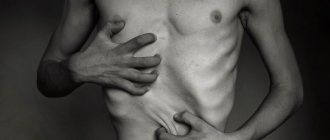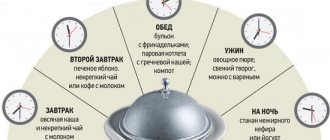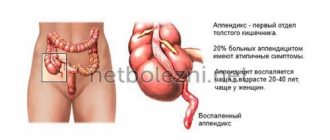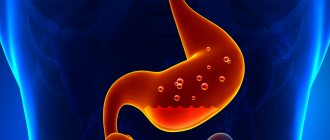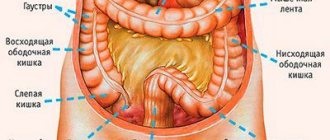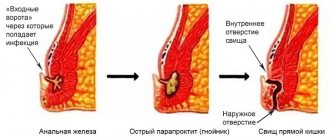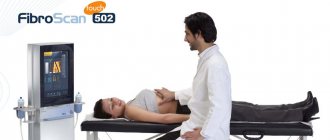Presyncope is a compensatory process in the human body that begins to occur due to disturbances in the blood supply to the brain. At this moment, weakness in the muscles begins to develop, the skin becomes covered with sticky sweat, dizziness appears, and the person begins to feel either hot or cold. What is a pre-fainting state, and what reasons lead to its appearance - we will talk about this in this article. We will also describe symptoms typical of a fainting state, methods of providing first aid in such a situation, which should be known to every person.
What is dizziness?
True dizziness or vertigo is a condition during which patients have a feeling of rotation of surrounding objects around them or a false sensation of their own movement or rotation.
An example of true dizziness, but not in any way related to the disease, is the dizziness that appears in people after riding a carousel, when, after an abrupt stop, they continue to see the movement of surrounding objects relative to themselves, as if the carousel were still in motion.
In most cases, the occurrence of true dizziness is a symptom of diseases of the system of control of balance and body position in space. This system includes the eyes, the vestibular apparatus of the inner ear, and sensory receptors in the human muscles, joints, and bones. Very often, dizziness, which is caused by a disruption in the balance system, is accompanied by nausea and vomiting.
Symptoms other than dizziness
As can be seen from the above, the term “dizziness” has a rather narrow medical interpretation (a false sensation of rotation of surrounding objects or one’s own rotation). But, despite this, people also use this term to refer to other symptoms that are not actually dizziness. So, most often “dizziness” is called such phenomena as:
- darkening in the eyes after abruptly rising to your feet from a sitting or lying position;
- a veil before the eyes;
- feeling of imminent loss of consciousness (fainting);
- weakness, nausea, feeling of confusion and unsteadiness in the legs;
- feeling of unsteady gait and impaired balance.
When a person suffering from dizziness comes to see a doctor, he should describe his condition, how he is feeling and the symptoms he is experiencing as accurately as possible, and not simply say that he suffers from “vertigo.” The further examination and treatment plan will depend on the accuracy of the description of the existing symptoms.
In contrast to true dizziness, which appears due to a disruption in the functioning of a person’s balance system, false dizziness, which patients describe as a feeling of weakness, instability, darkening in the eyes, blurred vision, etc., can most often be a sign of anemia, chronic fatigue , hypovitaminosis, hypotension and vegetative-vascular dystonia. In addition, fainting, episodes of lipothymia (a sharp decrease in muscle tone with great physical stress) and short-term attacks of epilepsy can also be confused with dizziness.
We pay special attention to attacks of sudden dizziness and weakness in people who have diabetes. In this category of patients, dizziness and weakness may indicate a dangerous decrease in blood glucose levels.
Heavy female share
That's what our ancestors would say. In the modern world this is, of course, not the case. To be a woman today means to be in no way inferior to a man. But still, in the 21st century there are specific women’s health problems, including dizziness.
- Pregnancy.
- Hormonal disbalance.
- Climax.
The joy of motherhood makes your head spin
The very first signs of pregnancy, “played out” in TV series and novels, are nausea and dizziness. They are perceived as scary, especially when the expectant mother does not yet know what awaits the baby. This means that at the first manifestations of dizziness, you should think about this topic and check - take a pregnancy test. If it is confirmed, there is a high probability that the cause of dizziness is precisely the new state of the body. In most cases, this is a normal individual reaction. But it’s also a reason to see a gynecologist faster. Perhaps he will advise additional strengthening medications, vitamins, microelements, prescribe examinations, and call for a more gentle regimen. Don't worry - this is for your own peace of mind.
The hormonal system has failed
The normal balance of hormones in the female body can be disrupted not only after taking certain medications (as discussed above). This happens during puberty, after miscarriages, abortions, and from severe stress.
For some reason I’m in a bad mood and my head is spinning...
Women's age
This is no longer a temporary hormonal imbalance, but a serious restructuring of the body in a new way.
What to do if you feel dizzy? Lie down, sit, or lean against a firm, vertical surface. At the first opportunity, seek help from passers-by, call 112, or call your family.
Sex hormones will not return to their previous levels, the body’s condition will stabilize, but from several months to several years the woman may suffer from dizziness.
Correction of well-being is possible, but rarely on your own; consultation with specialists is needed. It is not necessary to be the “heavy artillery” – a gynecologist, although it is necessary to see him. In many cases, herbal medicine, aromatherapy, homeopathy really help...
How does the human balance system work?
In most cases, true (central, systemic) dizziness is a manifestation of various diseases of the system that provides balance and control of body position in space. This system consists of the following 3 components:
- The vestibular apparatus, which is located deep in the skull, where sensitive receptors are located that respond to the angular or linear acceleration of the body in space.
- Eyes that provide visual information about the location of the body and its parts in space, as well as in relation to other objects.
- Sensitive receptors (proprioceptors) that are found in human bones, joints, muscles and ligaments. They provide reliable information about the position of body parts in space, as well as relative to each other.
All these 3 components of the balance system simultaneously send information to the brain, where it can be analyzed and processed into a person’s idea of his position in space and relative to other objects.
If for any reason the data that comes from one of the sources is distorted (for example, irritation of the receptors of the vestibular apparatus by an inflammatory reaction when there is no movement and acceleration), then an incorrect idea is created in the brain about the position and movement of the human body in space . Then an illusory sensation of movement or rotation arises, when in reality the body is motionless.
The causes of a disorder in a person’s balance system can be very different. Nowadays, more than 80 diseases are known that can cause dizziness. Below we describe the most common causes of dizziness.
Dizziness: the most common causes and forms
According to modern research, most often this disease is a symptom of diseases such as:
- BPPV (benign paroxysmal positional vertigo);
- basilar migraine;
- psychogenic dizziness;
- Meniere's disease;
- osteochondrosis of the cervical spine, as well as vertebrobasilar insufficiency;
- vestibular neuritis;
- brain tumors.
Note that BPPV accounts for more than 80% of cases of true dizziness. Below we will consider the main diseases that are accompanied by dizziness, and also describe the characteristics of dizziness in each case.
1. Benign paroxysmal positional vertigo is one of the most common forms of true vertigo. The name itself is deciphered as follows: “benign” means a favorable, harmless course of the disease, “paroxysmal” means the sudden onset of dizziness; “positional” - the appearance of dizziness when turning the head in a certain direction.
The reason for the development of BPPV is irritation of the receptors of the vestibular apparatus by otolith stones, which are located in the semicircular canals of the inner ear. This disease can also occur spontaneously in a person of any age, but in most cases it appears in people over 50-60 years old, after an injury or infection.
The main symptoms of benign positional vertigo are:
- the occurrence of severe dizziness when tilting or turning the head, when turning in bed, when throwing the head back;
- severe dizziness lasts from several seconds to several minutes, and it may be accompanied by weakness, severe nausea or vomiting;
- attacks of dizziness can appear in series, after which they disappear without a trace for some time.
Treatment of BPPV is carried out with a special exercise, and always under the supervision of a neurologist. Its duration is only 1-2 minutes, and its effectiveness reaches 90%.
2. Dizziness with migraine. Migraine is one of the most common types of headaches. In some cases, during a migraine attack, blood circulation is disrupted in the areas of the brain that control the functioning of the vestibular apparatus, which causes severe dizziness, after which a severe headache in the back of the head may immediately develop, imbalance may occur, vomiting, noise and light intolerance may occur. . Some people with migraines may only have severe dizziness and nausea, but no headache. In children, one of the precursors of migraines in adulthood are attacks of severe dizziness, imbalance, nausea, vomiting, which over time turn into typical migraine attacks.
3. Psychogenic dizziness ranks second in prevalence after BPPV. But unlike it, psychogenic dizziness is not true dizziness, since it is not associated with disturbances in the functioning of the vestibular apparatus.
The main characteristics of this disease:
- description of dizziness as a feeling of fog in the head, confusion, fear of falling and losing consciousness, but not as one’s own spinning or other objects;
- attacks of dizziness occur spontaneously, often under stress, in a confined space (transport, elevator), as well as in crowded places;
- in addition to dizziness, patients have other complaints that resemble some diseases of the internal organs: a lump in the throat, soreness, pain in the chest, abdomen or in the heart area, pain and tension in the muscles, a feeling of lack of air, a feeling of tension and internal fear, anxiety, irritability, anxious sleep, strong and unreasonable concern about one’s own health, as well as the health of loved ones, etc.
Psychogenic dizziness can also be considered one of the most common manifestations of VSD (vegetative-vascular dystonia). Particularly often, attacks of false dizziness can be observed in patients with anxiety disorders and panic attacks.
Determining the psychogenic nature of dizziness plays a big role in determining the correct treatment, so if you have an idea that dizziness in your case may be psychogenic, we recommend that you study information about vegetative-vascular dystonia, as well as its treatment.
In particular, with psychogenic dizziness, treatment that is intended for VSD (sedatives, psychotherapy) will be much more effective than specific drugs for dizziness, prescribed for all cases of true dizziness.
4. Dizziness with Meniere's disease. This disease is characterized by periodic attacks of severe dizziness and deafness (usually in one ear), gradually leading to hearing loss.
At the moment, the exact cause of Meniere's disease is still unknown. But there are suggestions that in some cases it may be caused by injury, viral infections or allergies.
A typical manifestation of Meniere's disease is an acute attack of severe dizziness, which lasts several hours or days and is accompanied by nausea, vomiting, tinnitus, hearing loss (in one ear) and a feeling of pressure inside the ear.
Typically, attacks of this disease appear one after another over several weeks, after which they disappear for some time, but then begin again.
5. Dizziness due to osteochondrosis, as well as vertebrobasilar insufficiency, neck and head injuries. As we have already said, the work of the human balance control system involves sensitive receptors of the muscles, bones, joints, ligaments of the whole body and mainly the muscles, bones and ligaments of the neck.
Degenerative diseases of the cervical spine, including osteochondrosis, are one of the most common causes of dizziness, which patients often describe as unsteady gait and rarely as a feeling of spinning.
Osteochondrosis of the spine disrupts the functioning of the sensory receptors in the neck, and can also cause disruption of blood circulation in the vertebral arteries, which supply blood to the parts of the brain responsible for balance and maintaining the body, located in the brain stem.
Chronic circulatory disorder in the lower parts of the brain (vertebrobasilar system) is called vertebrobasilar insufficiency. Atherosclerosis of the neck vessels and long-term hypertension (increased blood pressure) also play a certain role in its development. Most often, vertebrobasilar insufficiency occurs in older people. In addition to dizziness, it is accompanied by symptoms such as memory loss, headaches (mainly in the back of the head) and tinnitus.
Attacks of acute circulatory disorders in the vertebrobasilar region can manifest as severe dizziness, loss of consciousness, vomiting, weakness and double vision.
Injuries to the head and cervical spine (especially after car accidents) can also cause dizziness. In such cases, it is usually more pronounced in the first days after the injury and gradually decreases as the patient rehabilitates.
6. Dizziness with vestibular neuritis. This disease is an inflammation of the vestibular nerve, which carries impulses from the receptors of the inner ear to the brain. When the vestibular nerve becomes inflamed, it temporarily loses its ability to conduct impulses. This, in turn, is manifested by severe dizziness, unsteady gait, nausea and vomiting.
The main cause of vestibular neuritis is viral infections, so attacks of associated dizziness may be accompanied by weakness, fever, cough or runny nose.
7. Dizziness due to brain tumors. Some brain tumors that are located near the inner ear can cause severe and progressive dizziness.
Symptoms of a tumor, in addition to dizziness, may include the following phenomena:
- hearing loss (usually one ear);
- nausea;
- tinnitus, hearing loss;
- headache;
- the appearance of strabismus, paralysis of the facial muscles.
Dizziness as a symptom of a brain tumor is most often observed in young people and children.
Panic attack
A panic attack is an uncontrollable attack of anxiety. The pathological process threatens the development of serious mental problems. The pathological condition is accompanied by pronounced clinical symptoms. Sometimes patients even confuse the condition with a heart attack.
During a panic attack, you feel very dizzy
So, let's highlight the characteristic features:
- chills;
- shiver;
- tachycardia;
- hot flashes;
- sweating;
- suffocation;
- dyspnea;
- pain in the left side of the chest;
- abdominal pain;
- attack of nausea and urge to vomit;
- urinary disturbance;
- constipation or diarrhea;
- dizziness, lightheadedness.
Patients may develop an uncontrollable fear of death. They may be troubled by insomnia and nightmares. It is difficult for patients to think soberly, their consciousness is confused. The attack usually lasts from fifteen minutes to half an hour. Some people have a panic attack once a month, and sometimes much more often - two or three times a day.
During a panic attack, a person has an obsessive fear of going crazy. Genetic predisposition plays a major role in the occurrence of the disease. A person is at risk if one of his close relatives has been diagnosed with a mental disorder. It is not for nothing that they say that all problems have their roots in childhood.
Indeed, upbringing and family conditions leave a big imprint on the rest of your life. A panic attack may occur in a person whose parents were overly demanding and critical. The personal characteristics of a person also play an important role. Suspiciousness, impressionability, vulnerability - all this can subsequently result in a panic attack.
Treatment necessarily includes a consultation with a psychotherapist. Psychotherapy will help to influence the very cause of the pathological condition. As for drug treatment, it will help relieve the symptoms of the disease. Patients may be prescribed tranquilizers, antidepressants, and B vitamins.
Dizziness during pregnancy
False dizziness (a feeling of weakness, instability, near fainting) is very often observed during pregnancy. Attacks of dizziness in such cases are usually associated with hypotension, as well as a decrease in blood glucose concentration. We bring to your attention the following recipe, which is an effective method of treating dizziness during pregnancy:
In a mug of warm, boiled water, you need to dissolve 1-2 tbsp. l. sugar and drink immediately after waking up or before leaving the house.
Pregnant women (especially during the first half of pregnancy) should always carry water with them, and at the first sign of dizziness, try to drink as much as possible.
Vestibular migraine
Migraine is a widespread disease, the manifestations of which are very diverse. Most often, in addition to dizziness at normal blood pressure, migraine is accompanied by a severe headache. As a rule, it is one-sided, pulsating and can persist for several minutes, hours, or several days. Often during an attack there is increased sensitivity to light and sounds.
Some patients notice the appearance of an aura before the onset of a migraine. In most cases, it consists of the occurrence of visual disturbances: loss of visual fields, flickering of spots in front of the eyes, luminous lines, etc. The aura usually appears an hour or less before the onset of the attack, and then disappears without a trace.
Migraines are more often diagnosed in women, and episodes of dizziness may be directly related to the phase of the menstrual cycle.
Treatment is carried out with medication. Usually, to eliminate pain and dizziness, the same medications are prescribed as for classic migraine. If attacks occur frequently, basic therapy is selected that is appropriate to the situation. All patients are also advised to avoid stress, eat right, normalize their work and rest schedule, and regulate the amount of physical activity.
Cases when you should consult a doctor immediately
You should consult a doctor as soon as possible in cases where dizziness is accompanied by the following symptoms:
- increased body temperature;
- persistent vomiting;
- severe headache, weakness of arm or leg muscles;
- severe dizziness lasts more than an hour;
- during an attack of dizziness the person lost consciousness;
- when dizzy, the patient fell and was seriously injured;
- A patient with diabetes mellitus and hypertension developed severe dizziness.
Bilateral vestibulopathy
Bilateral vestibulopathy refers to bilateral deficits in vestibular function, which is clinically manifested by:
- attacks of dizziness while moving with the illusion of rotation of the environment;
- instability;
- imbalances, especially severe in the dark and when walking on uneven surfaces;
- decreased visual acuity while walking and making head movements.
But all the symptoms are observed only when the person is in an upright position. If he sits or lies, there are no such violations.
Most often, bilateral vestibulopathy occurs as a result of taking medications, especially aminoglycoside antibiotics, as well as after suffering from infectious and inflammatory diseases of the brain and some other pathologies.
It is impossible to completely eliminate the disorder, but by performing a special set of exercises selected separately for each patient, it is possible to achieve the development of central vestibular compensation.
Diagnosis of dizziness
Diagnosis and treatment of dizziness is carried out by neurologists, vertebrologists, otorhinolaryngologists and ophthalmologists. In order to clarify the cause of dizziness, as well as prescribe the correct treatment, a patient with dizziness must undergo a series of examinations:
- Doppler ultrasound of the main arteries of the head;
- examination by an ophthalmologist;
- audiographic examination;
- CT (computed tomography) or MRI (magnetic resonance imaging);
- X-ray of the skull and cervical spine.
